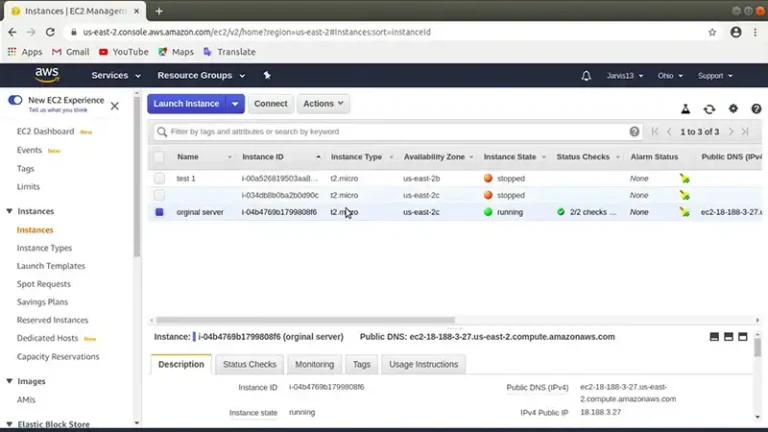How Netflix Used Big Data And Analytics To Generate Billions | Tech-o-nomic Enigma
To understand the astounding success of Netflix, one must look closely at the starring role big data and analytics have played in its ascent to become a multi-billion dollar entertainment behemoth.
Netflix’s journey from a DVD rental service to a global streaming titan showcases the transformative power of big data and analytics. By continually adapting and innovating its data strategies, Netflix has not only stayed ahead of the curve but also reshaped the curve entirely for the entertainment industry.
Read on to discover the strategies Netflix employed by harnessing the power of data.
Big Data And Analytics – To – Netflix’s Dollar Machine
Netflix’s triumph stems from strategic use of big data and analytics, driving personalized recommendations, retention, global expansion, targeted marketing, and operational efficiency.
The Personal Touch: Data-Driven Recommendations
Netflix’s recommendation engine stands as a prime example of leveraging big data to enhance the viewer experience. It goes beyond the conventional approach of suggesting content based on genre or popularity.
Instead, by intricately analyzing user behavior, viewing patterns, search histories, and individual ratings, Netflix crafts a personalized recommendation list, prominently featured as “Top Picks for You” on each user’s homepage. This approach not only keeps viewers engaged but also plays a pivotal role in reducing the likelihood of subscription cancellations.
Algorithm Specifics
The algorithmic magic behind this recommendation engine involves machine learning models that continually learn and adapt based on user interactions. Collaborative filtering, for instance, is a technique used to predict a user’s preferences by considering the choices of similar users.
This involves complex mathematical computations, often implemented using frameworks like TensorFlow or PyTorch. The recommendation engine continuously refines its predictions, ensuring that the content suggestions evolve with the viewer’s changing interests over time.
Advanced NLP
Moreover, Netflix employs advanced natural language processing (NLP) algorithms to understand user reviews and sentiments, contributing to a more nuanced understanding of individual preferences. Sentiment analysis code snippets may involve tokenization and sentiment scoring, with libraries like NLTK or spaCy commonly utilized in these tasks.
A Creative Compass: Guiding Content Decisions
Unlike traditional Hollywood, where content decisions often relied on gut feelings and experience, Netflix’s approach to original content creation is rooted in data analytics. The decision to greenlight a new series or film is heavily influenced by viewer data points, ensuring that the content aligns with the audience’s tastes and preferences.
This data-driven strategy has yielded notable successes, exemplified by hit series such as ‘House of Cards’ and ‘Stranger Things,’ which were strategically tailored to cater to previously undiscovered viewer needs.
Machine Learning
Behind the scenes, machine learning models analyze vast datasets to identify trends and patterns, helping Netflix understand what elements contribute to the success of certain content. This involves code snippets for data preprocessing, feature engineering, and model training.
For instance, Python libraries like Pandas and Scikit-learn play a crucial role in these processes. The goal is to predict the potential success of a show or movie before it’s even produced, minimizing risks and maximizing the chances of delivering content that resonates with the global audience.
Retention Over Acquisition: Keeping Subscribers Hooked
Netflix’s dedication to subscriber retention is powered by sophisticated data analysis that identifies early signs of potential churn. Python, with its versatile data analysis libraries, is often employed in this process. For instance, Pandas can be used to preprocess and analyze user engagement data. Code snippets might involve tracking changes in viewing time or patterns.
If a user’s viewing time decreases, it triggers an algorithm to provide timely recommendations. Machine learning models, implemented with frameworks like Scikit-learn, can predict the likelihood of a user canceling their subscription based on their recent behavior.
This enables Netflix to push personalized content recommendations strategically, rekindling the viewer’s interest and reducing the risk of subscription cancellations.
import pandas as pd
from sklearn.model_selection import train_test_split
from sklearn.ensemble import RandomForestClassifier
from sklearn.metrics import accuracy_score
# Assuming 'user_data' contains relevant features and 'churn' indicates subscription cancellation
X_train, X_test, y_train, y_test = train_test_split(user_data[['feature1', 'feature2', '...']], user_data['churn'], test_size=0.2, random_state=42)
# Train a RandomForestClassifier
model = RandomForestClassifier(n_estimators=100, random_state=42)
model.fit(X_train, y_train)
# Make predictions on the test set
predictions = model.predict(X_test)
# Evaluate the model's accuracy
accuracy = accuracy_score(y_test, predictions)
print(f'Model Accuracy: {accuracy}')Streamlining the Stream: Optimal Viewing Experience
Netflix’s commitment to a buffer-free, high-definition streaming experience is facilitated by predictive scaling and bandwidth optimization. Python, along with tools like Apache Spark, is used for real-time data processing and analysis. Code snippets may involve monitoring internet speeds globally and adjusting streaming quality accordingly.
For instance, the following Python code using a hypothetical streaming service API demonstrates adaptive streaming quality adjustment based on network conditions.
import streaming_api
def adjust_stream_quality(user_id, current_bandwidth):
# Get user's location and historical bandwidth data
user_location = streaming_api.get_user_location(user_id)
historical_bandwidth = streaming_api.get_historical_bandwidth(user_id)
# Analyze data and predict optimal stream quality
optimal_quality = predict_optimal_quality(user_location, current_bandwidth, historical_bandwidth)
# Set the stream quality for the user
streaming_api.set_stream_quality(user_id, optimal_quality)
def predict_optimal_quality(location, current_bandwidth, historical_bandwidth):
# Implement a predictive algorithm based on location and bandwidth data
# Example: Linear regression or machine learning model
optimal_quality = predict_with_machine_learning(location, current_bandwidth, historical_bandwidth)
return optimal_qualityGoing Global: Data-Informed Expansion
When Netflix eyes new territories, data paves the way. Through extensive analysis of regional preferences and viewing habits, Netflix not only personalizes content but strategically selects its next international frontiers.
Marketing Magic: Targeted Campaigns
Netflix’s marketing strategies are as calculated as their content decisions. Big data informs them where, how, and to whom to market their next big show, maximizing subscriber acquisition and engagement.
Access for All: Enhancing Viewer Accessibility
From closed captions to audio descriptions, Netflix uses big data to improve accessibility features, recognizing diverse needs among its global audience.
Behind the Scenes: Operational Agility
Data analytics extend to the backbone of Netflix’s operations—be it in forecasting customer service needs or optimizing server capacity—ensuring the wheel turns smoothly.
Frequently Asked Questions
How does Netflix handle user privacy in the context of extensive data collection for personalized recommendations?
Netflix prioritizes user privacy through strict data protection measures. Personal information is encrypted, and data is anonymized for analysis. The platform adheres to robust privacy policies, ensuring that user data is used solely for enhancing the viewing experience while safeguarding individual privacy.
What methodologies or algorithms does Netflix employ to predict potential content success before production, and how accurate are these predictions?
Netflix uses a combination of machine learning algorithms for content prediction. Collaborative filtering, deep learning models, and sentiment analysis contribute to decision-making. The accuracy of predictions is continually refined as algorithms learn from user interactions, providing Netflix with a reliable tool for forecasting content success.
Can you elaborate on the strategies Netflix employs to adapt its content recommendations for diverse global audiences and cultures?
Netflix employs a multifaceted approach to tailor recommendations globally. This includes analyzing regional viewing habits, preferences, and cultural nuances. The platform utilizes machine learning models that incorporate geographical and cultural factors, allowing for dynamic adjustments to recommendations to resonate with diverse audiences worldwide.
Conclusion
Netflix’s massive success is rooted in its savvy use of big data and analytics. From personalized recommendations to subscriber retention strategies, machine learning models are key. The focus on real-time streaming optimization, global expansion, targeted marketing, and accessibility highlights Netflix’s comprehensive data-driven approach.






